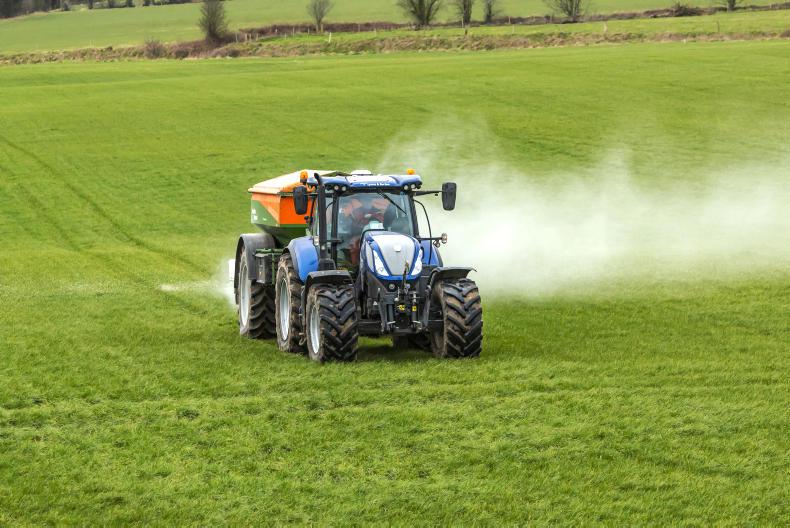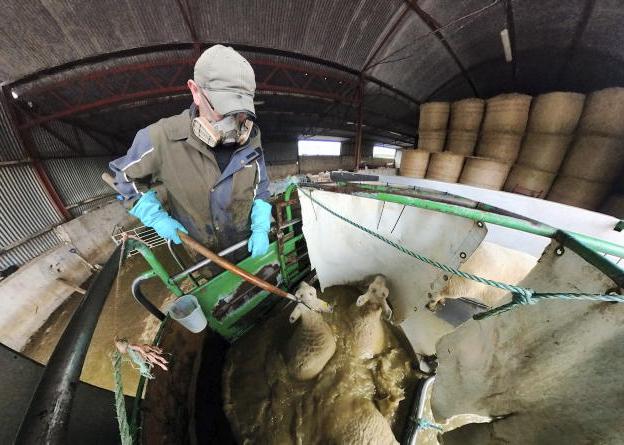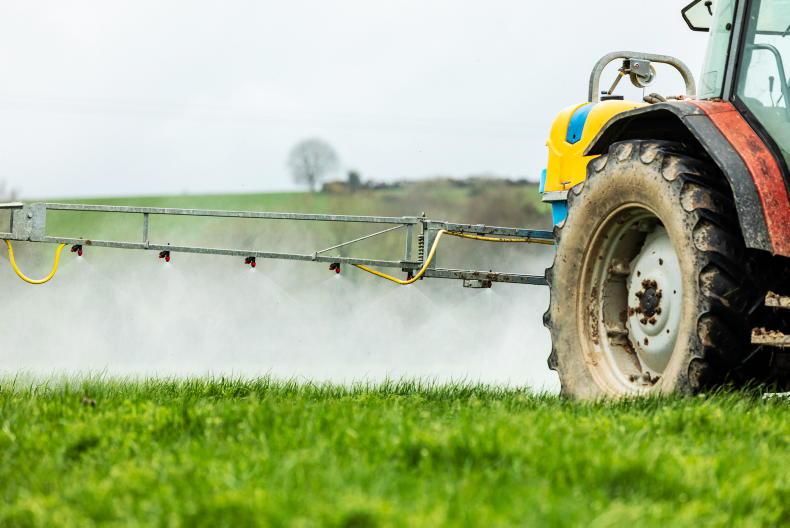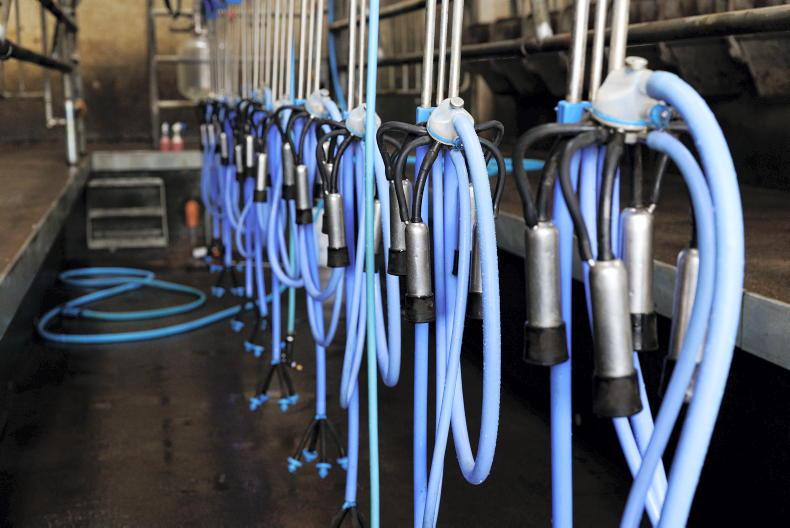Up to recently, the two main types of chemical nitrogen fertiliser used on Irish farms were calcium ammonium nitrate (CAN) and urea. There are three problems with urea and CAN fertiliser. In the conversion of urea to ammonium, ammonia gas is released. Ammonia is an air pollutant that is damaging to life in sensitive eco-systems and is linked to human respiratory health issues.
Ireland has exceeded its ammonia emissions targets and because 98% of Ireland’s ammonia emissions come from farming, the focus is on us to do something about it. So using less urea is one way to help solve the ammonia problem.
However, CAN is not the alternative as it releases nitrous oxide which is a potent greenhouse gas. As agriculture accounts for 33% of Ireland’s greenhouse gas (GHG) emissions, moving away from CAN will help to reduce our greenhouse gas emissions.
Furthermore, CAN fertiliser at 50% nitrate fertiliser is more likely to leach from the soil and pollute water compared with a urea or ammonia fertiliser.
This is where protected urea comes in. It has all of the characteristics of urea – low GHG emissions and more stable in the soil, but it has similarly low ammonia loss as CAN so it ticks all the boxes as being environmentally safe.
What is protected urea?
Protected urea is urea which is treated with an active ingredient called a urease inhibitor. The urease inhibitor can be either coated on to the outside of the fertiliser granule or incorporated into the urea granule melt during manufacture.
How does a urease inhibitor work?
Urease is the enzyme which allows the conversion of urea to ammonium. It is during this conversion that ammonia gas is lost from untreated urea.
A urease inhibitor blocks the activity of the urease enzyme. This slows down the rate at which urea converts to ammonium. In doing so, ammonia loss is reduced to low levels.
Will this affect the availability of nitrogen to the plant?
No, because the conversion of protected urea to ammonium begins as soon as the fertiliser granule starts to melt.
The urease inhibitor slows down the rate at which the urea converts to ammonium. The result is that the conversion occurs over a period of a few days rather than a few hours, as would be the case with conventional urea. This is a good thing as we want the fertiliser to be available to the plant over a period of days to weeks rather than over a few hours.
Are there different types of urease inhibitors?
Yes, the following products are recognised as acting effectively as urease inhibitors: NBPT, 2-NPT, NBPT+NPPT. Teagasc has conducted research with all three inhibitor options, most extensively with NBPT and NBPT+NPPT.
Are these approved for use in
Ireland?
Yes, these active ingredients are approved for use by the European Chemicals Agency through the Registration, Evaluation, Authorisation and Restriction of Chemicals (REACH) process.
Can I spread protected urea throughout the growing season?
Yes, you can spread protected urea across the growing season at times when you would otherwise spread CAN or unprotected urea. This may potentially simplify the fertiliser spreading programme on the farm and setting up of fertiliser spreader for only one straight nitrogen product each year.
Will using protected urea reduce yields?
No, published Teagasc trials have shown that protected urea consistently yields as well as CAN in Irish grasslands with no difference in annual production between the two fertilisers. In this research, fertiliser was spread five times per year and the grass was harvested six times per year.
Current research is looking at an increased number of applications and harvests to compare growth rate under simulated grazing.
Will using protected urea reduce efficiency?
No, published Teagasc trials conducted in different areas of Ireland have shown that the nitrogen recovery efficiency of protected urea and CAN are consistently the same.
Is protected urea more costly?
On 14 March 2019 the following costs detailed in Table 1 were quoted.
These costs show protected urea to be less costly than CAN while performing just as well in terms of yield and N recovery efficiency. Bear in mind that fertiliser costs fluctuate but always make the cost comparison on the basis of cost per kilo of nitrogen for straight nitrogen products.
Can protected urea be used in a compound fertiliser?
Most compound fertilisers containing nitrogen use CAN as the main nitrogen source. Some companies are using urea and protected urea in compounds but the selection of products available is much less compared with CAN-based compounds. However, about half of all the nitrogen used in Ireland is in the straight nitrogen form, so this is the main focus at present.
Does protected urea reduce emissions?
Yes, published Teagasc trials have shown that protected urea has 71% lower nitrous oxide emissions than CAN.
Does protected urea reduce loss of ammonia?
Yes, based on published Teagasc research, protected urea has comparable ammonia loss to CAN and ammonia loss is reduced by 79% compared with urea.
Is there potential for protected urea to reduce nitrate loss to water?
Yes, during periods when leaching occurs nitrate present in the soil is vulnerable to leaching loss. Protected urea does not deliver nitrogen directly as nitrate to the soil, therefore reducing the risk of nitrate losses occurring if it rains after fertiliser is spread. Reduced ammonia loss compared with urea will also reduce the risk of ammonia being deposited from the atmosphere on to sensitive habitats or into sensitive water bodies.
*Patrick Forrestal, Cathal Somers, Mark Plunkett, David Wall and Tom O’Dwyer, Teagasc, Johnstown Castle and Moorepark
Protected urea is a great product that reduces ammonia losses and GHG emissions. However, research questions remain. What is the long-term effect of the urease inhibitor on soil microbes? The answer to this question will emerge over time, but it wouldn’t prevent me from using it now. Protected urea is not immediately on the radar for farmers in Northern Ireland.
Authorities there say moving to protected urea will have minimal effects on ammonia emissions.
They are also looking at nitrificiation inhibitors to reduce nitrous oxide emissions.
CAN causes greenhouse gas emissions while urea causes ammonia emissions.Using protected urea dramatically reduces ammonia and nitrous oxide emissions.Protected urea is just as reliable for grass growth or nitrogen efficiency as CAN.Protected urea is cheaper than CAN but more expensive than urea.
Up to recently, the two main types of chemical nitrogen fertiliser used on Irish farms were calcium ammonium nitrate (CAN) and urea. There are three problems with urea and CAN fertiliser. In the conversion of urea to ammonium, ammonia gas is released. Ammonia is an air pollutant that is damaging to life in sensitive eco-systems and is linked to human respiratory health issues.
Ireland has exceeded its ammonia emissions targets and because 98% of Ireland’s ammonia emissions come from farming, the focus is on us to do something about it. So using less urea is one way to help solve the ammonia problem.
However, CAN is not the alternative as it releases nitrous oxide which is a potent greenhouse gas. As agriculture accounts for 33% of Ireland’s greenhouse gas (GHG) emissions, moving away from CAN will help to reduce our greenhouse gas emissions.
Furthermore, CAN fertiliser at 50% nitrate fertiliser is more likely to leach from the soil and pollute water compared with a urea or ammonia fertiliser.
This is where protected urea comes in. It has all of the characteristics of urea – low GHG emissions and more stable in the soil, but it has similarly low ammonia loss as CAN so it ticks all the boxes as being environmentally safe.
What is protected urea?
Protected urea is urea which is treated with an active ingredient called a urease inhibitor. The urease inhibitor can be either coated on to the outside of the fertiliser granule or incorporated into the urea granule melt during manufacture.
How does a urease inhibitor work?
Urease is the enzyme which allows the conversion of urea to ammonium. It is during this conversion that ammonia gas is lost from untreated urea.
A urease inhibitor blocks the activity of the urease enzyme. This slows down the rate at which urea converts to ammonium. In doing so, ammonia loss is reduced to low levels.
Will this affect the availability of nitrogen to the plant?
No, because the conversion of protected urea to ammonium begins as soon as the fertiliser granule starts to melt.
The urease inhibitor slows down the rate at which the urea converts to ammonium. The result is that the conversion occurs over a period of a few days rather than a few hours, as would be the case with conventional urea. This is a good thing as we want the fertiliser to be available to the plant over a period of days to weeks rather than over a few hours.
Are there different types of urease inhibitors?
Yes, the following products are recognised as acting effectively as urease inhibitors: NBPT, 2-NPT, NBPT+NPPT. Teagasc has conducted research with all three inhibitor options, most extensively with NBPT and NBPT+NPPT.
Are these approved for use in
Ireland?
Yes, these active ingredients are approved for use by the European Chemicals Agency through the Registration, Evaluation, Authorisation and Restriction of Chemicals (REACH) process.
Can I spread protected urea throughout the growing season?
Yes, you can spread protected urea across the growing season at times when you would otherwise spread CAN or unprotected urea. This may potentially simplify the fertiliser spreading programme on the farm and setting up of fertiliser spreader for only one straight nitrogen product each year.
Will using protected urea reduce yields?
No, published Teagasc trials have shown that protected urea consistently yields as well as CAN in Irish grasslands with no difference in annual production between the two fertilisers. In this research, fertiliser was spread five times per year and the grass was harvested six times per year.
Current research is looking at an increased number of applications and harvests to compare growth rate under simulated grazing.
Will using protected urea reduce efficiency?
No, published Teagasc trials conducted in different areas of Ireland have shown that the nitrogen recovery efficiency of protected urea and CAN are consistently the same.
Is protected urea more costly?
On 14 March 2019 the following costs detailed in Table 1 were quoted.
These costs show protected urea to be less costly than CAN while performing just as well in terms of yield and N recovery efficiency. Bear in mind that fertiliser costs fluctuate but always make the cost comparison on the basis of cost per kilo of nitrogen for straight nitrogen products.
Can protected urea be used in a compound fertiliser?
Most compound fertilisers containing nitrogen use CAN as the main nitrogen source. Some companies are using urea and protected urea in compounds but the selection of products available is much less compared with CAN-based compounds. However, about half of all the nitrogen used in Ireland is in the straight nitrogen form, so this is the main focus at present.
Does protected urea reduce emissions?
Yes, published Teagasc trials have shown that protected urea has 71% lower nitrous oxide emissions than CAN.
Does protected urea reduce loss of ammonia?
Yes, based on published Teagasc research, protected urea has comparable ammonia loss to CAN and ammonia loss is reduced by 79% compared with urea.
Is there potential for protected urea to reduce nitrate loss to water?
Yes, during periods when leaching occurs nitrate present in the soil is vulnerable to leaching loss. Protected urea does not deliver nitrogen directly as nitrate to the soil, therefore reducing the risk of nitrate losses occurring if it rains after fertiliser is spread. Reduced ammonia loss compared with urea will also reduce the risk of ammonia being deposited from the atmosphere on to sensitive habitats or into sensitive water bodies.
*Patrick Forrestal, Cathal Somers, Mark Plunkett, David Wall and Tom O’Dwyer, Teagasc, Johnstown Castle and Moorepark
Protected urea is a great product that reduces ammonia losses and GHG emissions. However, research questions remain. What is the long-term effect of the urease inhibitor on soil microbes? The answer to this question will emerge over time, but it wouldn’t prevent me from using it now. Protected urea is not immediately on the radar for farmers in Northern Ireland.
Authorities there say moving to protected urea will have minimal effects on ammonia emissions.
They are also looking at nitrificiation inhibitors to reduce nitrous oxide emissions.
CAN causes greenhouse gas emissions while urea causes ammonia emissions.Using protected urea dramatically reduces ammonia and nitrous oxide emissions.Protected urea is just as reliable for grass growth or nitrogen efficiency as CAN.Protected urea is cheaper than CAN but more expensive than urea. 








SHARING OPTIONS